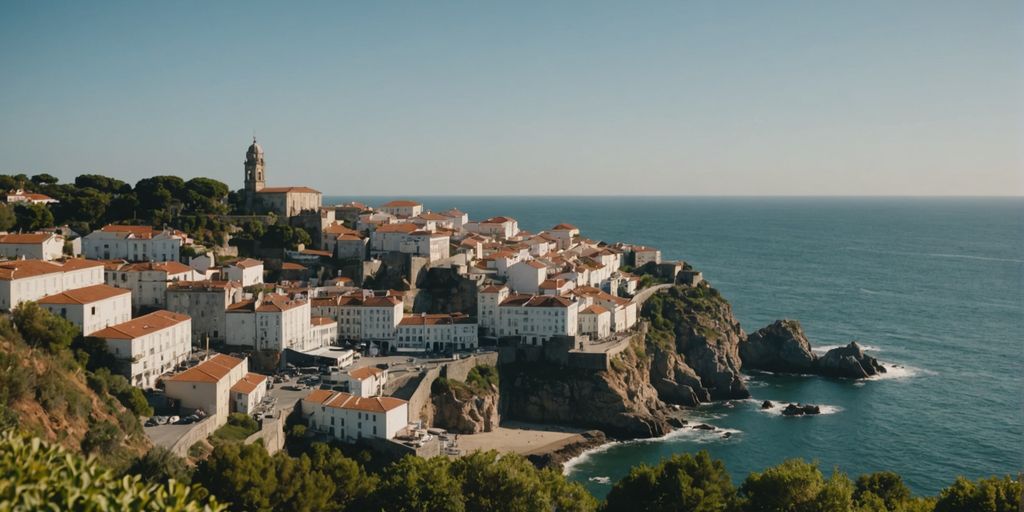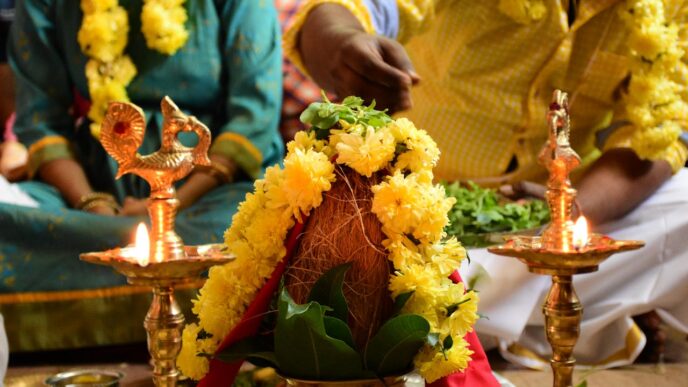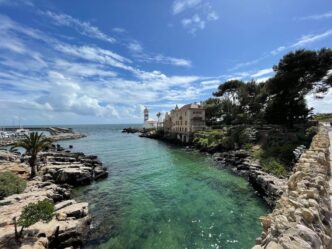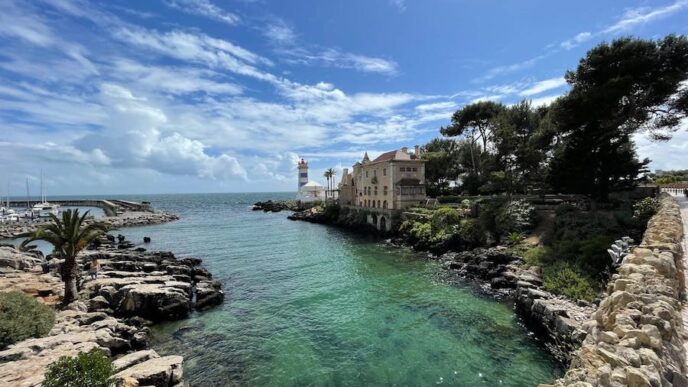Lisbon
Lisbon is Portugal’s vibrant capital, known for its mix of historic and modern charm. Built over seven hills at the mouth of the Tagus River, this city has a lot to offer. Although much of the original city was destroyed in a 1755 earthquake, Lisbon still boasts some incredible landmarks.
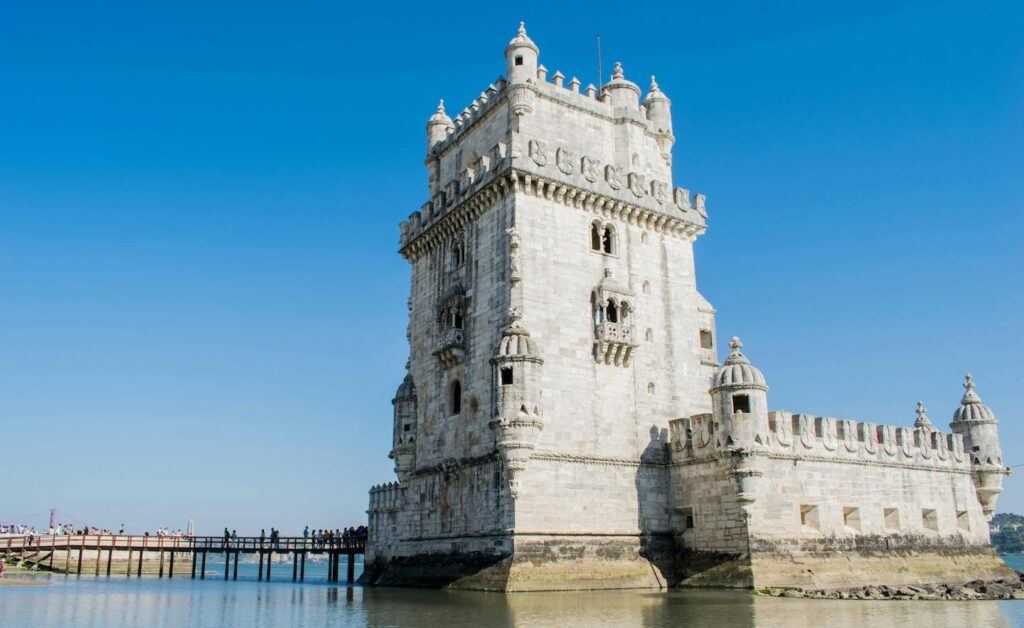
Explore the 11th-century São Jorge Castle and the 16th-century Torre de Belém. Wander through cobbled streets and discover stunning mosaic-tiled plazas, fairytale castles, and gothic monasteries. Lisbon’s architecture is a major draw for visitors.
Don’t miss the Elevador da Glória, a funicular that takes you up steep hills to amazing lookout points. By day, enjoy the traditional mosaic walkways, and by night, savor the mouthwatering aromas of local cuisine. Lisbon is also home to the Meo Kalorama Festival, featuring a star-studded lineup and diverse performers.
For a unique experience, visit the multicultural Martim Moniz neighborhood. Here, you can find hidden Chinese restaurants operating from family apartments. Lisbon is a city that seduces the senses, whether you’re enjoying the custardy sweetness of pasteis de nata or the savory zing of bacalhau.
Porto
Porto is Portugal’s second city and a must-visit. The city sits beside the Douro River and has a colorful old town. You can explore São Bento station, which is covered in beautiful azulejo tiles. Porto is perfect for a long weekend. You can stroll through gardens, medieval palaces, and cathedrals. The food here is amazing too.
Don’t miss these top attractions in Porto:
- Luís I Bridge
- Douro River
- Cais da Ribeira
- Torre dos Clérigos
Porto is known for its Baroque and Gothic architecture. The nightlife is vibrant and contemporary. Spend a few days here to truly experience the city. The downtown area, Baixa do Porto, is where you’ll find Avenida dos Aliados and Rua de Santa Catarina. Important monuments like Torre dos Clérigos are also here. Enjoy shopping, dining, and exploring in this lively area.
Sintra
Nestled in the lap of a wooded mountain range, Sintra is a charming, verdant town. It’s a UNESCO World Heritage site, known for its stunning beauty and historic attractions. The town is famous for its palaces and castles, which look like something out of a fairy tale. Kids love the vividly colored walls and Disney-like castles. It’s a popular day-trip destination from Lisbon, just 30 km away. However, staying overnight is recommended to fully appreciate its magic. Don’t miss the romantic 19th-century Pena Palace and the medieval Castle of the Moors.
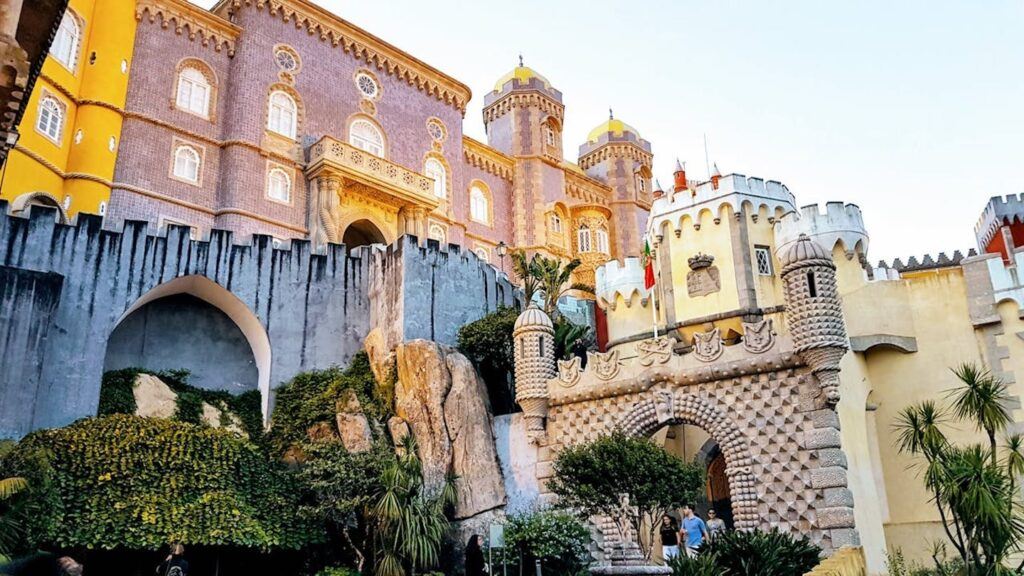
Algarve
The Algarve is a top spot for warm weather, adventurous hiking, and trendy beaches. Located in Portugal’s southernmost region, it’s a postcard-perfect place with whitewashed villages, manicured golf courses, and expansive resorts. Sure, it’s touristy, but it’s also a great escape. You’ll find tiny fishing villages and coves with jewel-bright waters cradled by dramatic cliffs. Everyone speaks English, which is handy if you need directions.
Millions of visitors come here every year to lounge on white sand beaches backed by jaw-dropping cliffs and coves. The Algarve offers resort-style amenities like golf courses, tennis centers, spas, and fine-dining restaurants. Don’t let reports of crowds put you off. The Algarve has a reliably warm climate and some of the most beautiful beaches in the country. It’s also home to sleepy whitewashed villages, each one seemingly prettier and more packed with local charm than the last. All are easily reached by a scenic rail journey.
Madeira
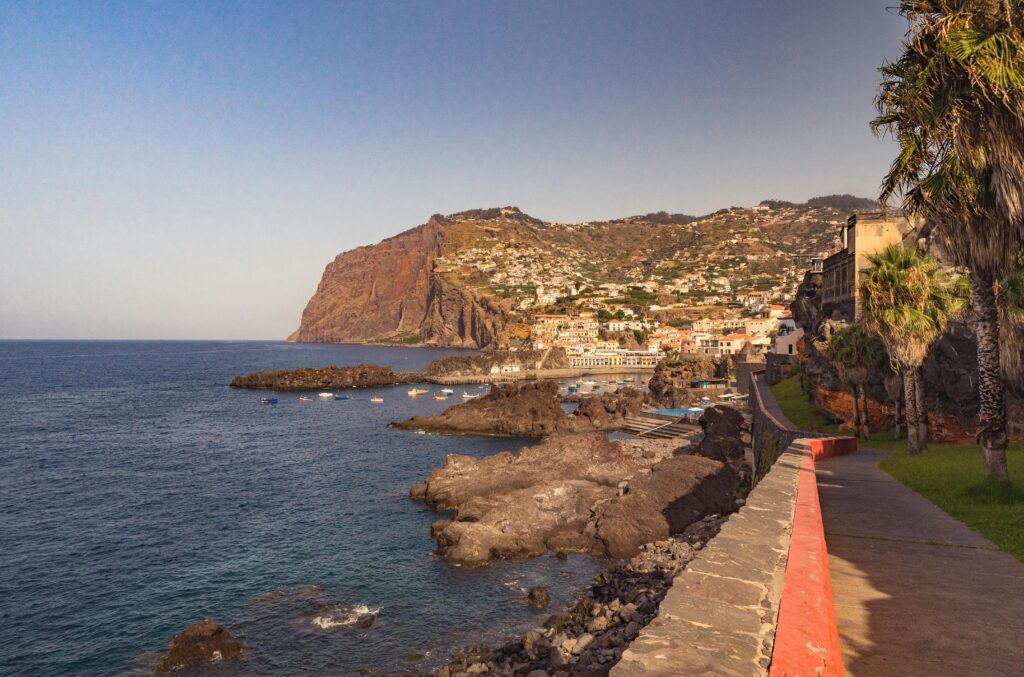
Madeira is a tropical paradise with narrow streets and leafy squares. The capital, Funchal, offers stunning views from every corner. Don’t miss the Monte Palace gardens and the fortress. Famous residents include Columbus and Cristiano Ronaldo, who even has his own museum here.
For a memorable trip, consider these activities:
- Take a cable car to Monte.
- Visit the Mercado dos Lavradores.
- Enjoy a boat trip on Santa Maria de Colombo.
- Explore the Monte Palace Tropical Garden.
- Check out the Igreja Da Nossa Senhora do Monte.
- Spend a day on Porto Santo island.
Funchal is a great starting point to discover the island. You can also stay in Porto Moniz and enjoy its natural pools. Madeira is perfect for a 4 or 5-day trip. If you’re feeling adventurous, you can also visit the Azores.
Madeira is known for its exotic flowers and balmy climate. It’s a trendy destination, especially for its New Year’s Eve parties. Don’t forget to take the ferry to Porto Santo Island for one of the best beaches around.
Azores
The Azores are a group of nine islands in the Atlantic Ocean, about 1,500km west of Lisbon. These islands are known for their volcanic landscapes and green pastures. The Azores are a top spot for nature lovers, offering one of the best marine habitats in the world. You can find about a third of the world’s species of cetacean here.
The Azores are perfect for outdoor adventures. You can hike to volcanic crater lakes, explore lava tubes, or swim in natural hot springs. The islands offer a peaceful atmosphere and stunning natural beauty.
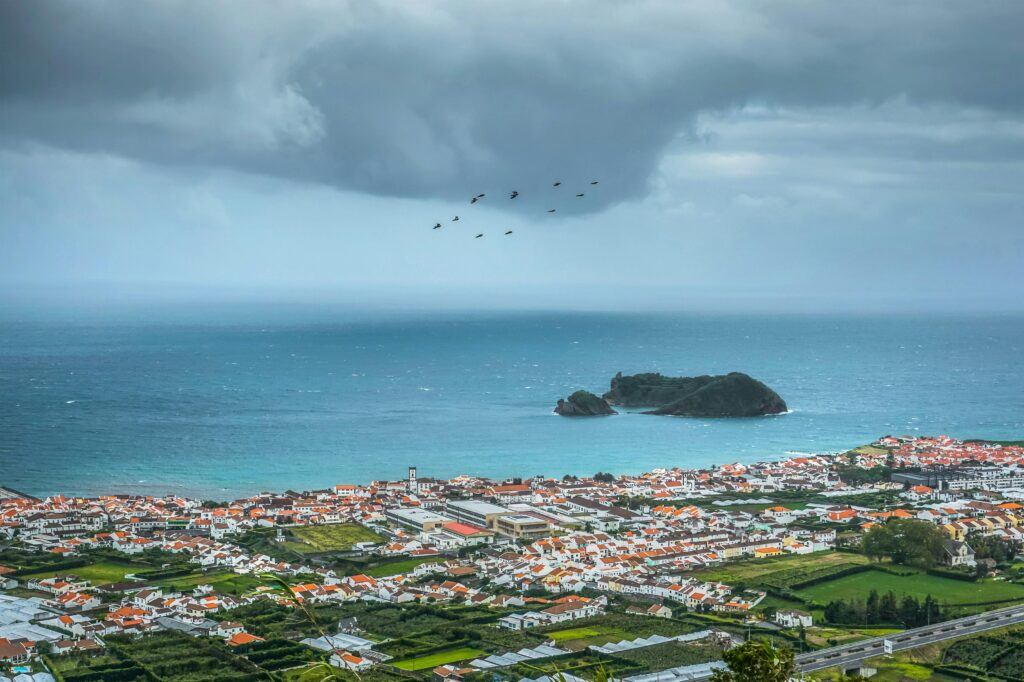
São Miguel is the largest island and the easiest to reach by air. It has plenty to keep you busy, like hiking trails, waterfalls, and the beautiful twin lakes called Lagoa das Sete Cidades. Don’t miss the small village of Furnas, known for its volcanic activity.
If you’re looking for a relaxing retreat, the Azores are a great alternative to the crowded beaches of the Algarve. Even the largest island, São Miguel, is full of tranquil towns and peaceful paradises.
Évora
Évora is a charming city in southern Portugal’s Alentejo province. It’s one of the country’s best-preserved medieval towns. The city is perfect for a day trip or an overnight stay.
Roman Temple
The Roman Temple is a must-see. It’s one of the top attractions in Évora. The temple dates back to the 1st century and is a stunning example of Roman architecture.
Chapel of Bones
The Chapel of Bones is both eerie and fascinating. Its interior is decorated with human bones. This macabre monument is unforgettable and not for the faint-hearted.
Évora Cathedral
The Évora Cathedral is another highlight. This impressive cathedral was built during the Christian reconquest. It’s one of the most stunning visitor attractions in the old town.
Moorish City Walls
The Moorish city walls are a reminder of Évora’s rich history. These walls were built during the Moorish rule and add to the city’s enchanting atmosphere.
Alentejo Wine Region
Évora is located in the Alentejo wine region. This area is known for its excellent wines. Don’t miss the chance to sample some local varieties during your visit.
Coimbra
Discover Coimbra: the city of education and culture. This historic riverside city was once Portugal’s medieval capital. Now, it’s a lively university town. The University of Coimbra, founded in the 13th century, is one of the oldest in the world. Its beautiful campus is a must-see.

Things to Do in Coimbra
- Explore historic landmarks: Visit Roman and medieval ruins scattered throughout the city.
- Travel tips: Wear comfortable shoes; the city is hilly.
- Accommodation options: From budget hostels to luxury hotels, there’s something for everyone.
- Culinary delights: Try local dishes at traditional restaurants.
Coimbra is also famous for its unique style of Fado music. Enjoy intimate performances in small bars and restaurants. Don’t miss out on this authentic Portuguese experience!
Braga
Braga is a city that’s been transformed by the arrival of many Brazilian immigrants. This change has given the city a fresh and fun vibe. Most tourists know Braga for The Sanctuary of Bom Jesus, which is a must-see. But there’s more to explore!
The Braga Cathedral, also known as Sé de Braga, is a must-visit for history lovers. Built around 45 AD, it’s so old that locals say, “Older than the Sé de Braga,” when talking about something really ancient.
Guimarães, nearby, has one of the cutest historic centers in Portugal. It’s filled with beautiful monuments like the Guimarães Castle, where Portugal was born. The Largo da Oliveira is perfect for a nice lunch or a cold beer at night.
Aveiro
Often called the Venice of Portugal, Aveiro is a charming city with beautiful canals and colorful gondolas known as moliceiros. It’s located on the edge of the vast Ria de Aveiro lagoon. This area is perfect for a road trip, especially if you enjoy quiet evenings in less crowded towns.
Aveiro is also an art nouveau hub. The city center looks like a painting come to life. Don’t miss the Costa Nova, a nearby beach with rainbow-striped fisherman cottages. It’s a peaceful place to relax, enjoy the coast, and watch surfers.
For history lovers, the Cathedral of Aveiro and the 15th-century Convento de Jesus are must-visits. The Convento features a lavish marble tomb.
Frequently Asked Questions
What is the best time to visit Portugal?
The best time to visit Portugal is during the spring (March to May) or fall (September to October) when the weather is pleasant and there are fewer tourists.
Do I need a visa to visit Portugal?
If you are from the EU, US, Canada, or Australia, you don’t need a visa for stays up to 90 days. Check with the Portuguese consulate for other countries.
What is the currency used in Portugal?
Portugal uses the Euro (€) as its currency.
Is English widely spoken in Portugal?
Yes, English is commonly spoken in tourist areas, hotels, and restaurants. However, learning a few basic Portuguese phrases can be helpful.
What are the must-visit places in Lisbon?
In Lisbon, you should visit the Belém Tower, Jerónimos Monastery, and the Alfama district. Don’t miss a tram ride on the famous Tram 28.
How do I travel between cities in Portugal?
You can travel between cities by train, bus, or car. Trains are comfortable and efficient, while buses are often cheaper. Renting a car offers more flexibility.
Is Portugal a family-friendly destination?
Yes, Portugal is very family-friendly with many attractions suitable for children, including beaches, parks, and historical sites.
What is the local cuisine like in Portugal?
Portuguese cuisine includes delicious seafood, pastries like Pastéis de Nata, and dishes like Bacalhau (salted cod). Don’t forget to try the local wines!

